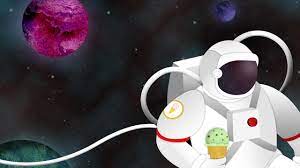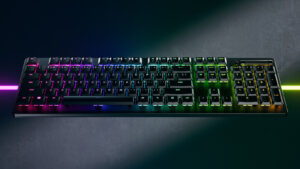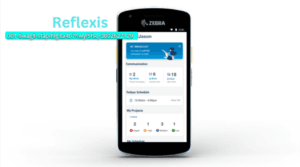
I shouted, you shouted, we all shouted for ice cream, “Especially if you are an astronaut. We all know that in space, no one can hear you scream, but even if you do, no ice cream astronauts are given to You are on the last border.
In 1968, Walter M. Schirra, Donn F. Eisele, and R. Walter Cunningham went up to Apollo 7 and became the first astronaut to be the mission in the famous Apollo Nasa program. That was also the first time the frozen neapolitan neapolitan ice cream was eaten (out of the bag) in the space. That’s also the last.
That does not mean that ice cream never managed to return to space. In 2006 Space Shuttle Atlantis made a supply of running to the International Space Station (ISS). The part of the charge includes a new freezer – called a glacier – so that astronauts can store research samples.
Instead of only sending an empty freezer, Nasa packed it with a blue bell ice cream cup (vanilla with a whirlpool of chocolate sauce). Six years later, in 2012, more blue bell ice cream (chocolate, vanilla, and birthday cake flavor) made it to ISS above the supply capsule of the Dragon Spacex series. That was the last time the goodness of frozen cream officially entered space (through the National Air and Space Museum).
Astronauts rarely enjoy ice cream in space
So if the astronaut is not true -really eating astronaut ice cream, why is it called “ice cream astronaut?” Good question.As might be imagined, there are many problems that must be resolved during the early days of NASA, and one of them is to find ways to feed the astronaut. Weight is always a concern for space flights, and strict places do not allow much additional luggage space. Foods needed to be light, have a long shelf life, and are easily packaged while not allowing flying crumbs not to want around the environment. Finally, while having the quality of Michelin stars is not a priority, it must be easy to prepare and can be eaten.
Dry food, which offers better nutrition than dehydration food, has become a NASA menu staple from the start. In fact, the space agency has contributed to the progress of several different food preservation techniques (dehydration, frozen drying, medium humidity, pasteurization with irradiation, and nitrogen packaging) for decades (through NASA).
When the public attraction with Space Flight takes off in the late 1960s and early 1970s, museums around the world want to make interest and start to provide various souvenirs related to space to be sold in their souvenir shops. The visitor center at the Ames Research Center in California appears with those who are still alive in bad.
Astronaut ice cream is … gimmick of souvenir shop
In 1973 Ames reached outdoor American products at Boulder, Colorado. At that time, it was one of the few companies that produce and sell dry food to the public. Ames wants to know whether American outdoor can make large amounts of dry ice cream so they can sell them in their souvenir shops (through NASA).
The owner of Ron Smith jumped on the occasion but said the first version of a treat that is now well known is not what everyone is known and loved. They took a half-gallon of frozen gallons from neapolitan ice cream, cutting it with bandsaw saws, then frozen “using a special engine, which converted the ice directly into gas” (through Serious Eats). This sublimation process is how small air bags replace ice crystals in ice cream. About three quarters of the dubbid and dry ice cream are then put into the bag.
They finally perfect the process for Ames, but Smith still believes it’s just a trend. He’s wrong. According to the Franklin Institute, “Astronaut Ice Cream” remains one of the most popular souvenirs worldwide, selling more than 30,000 packages every year at its SCI store.And while it is a big blow on planet Earth, astronauts cannot eat fragile products in space because they tend to break and get crumbs in all the wrong places. Exactly the same reason, bread is not allowed in space.








